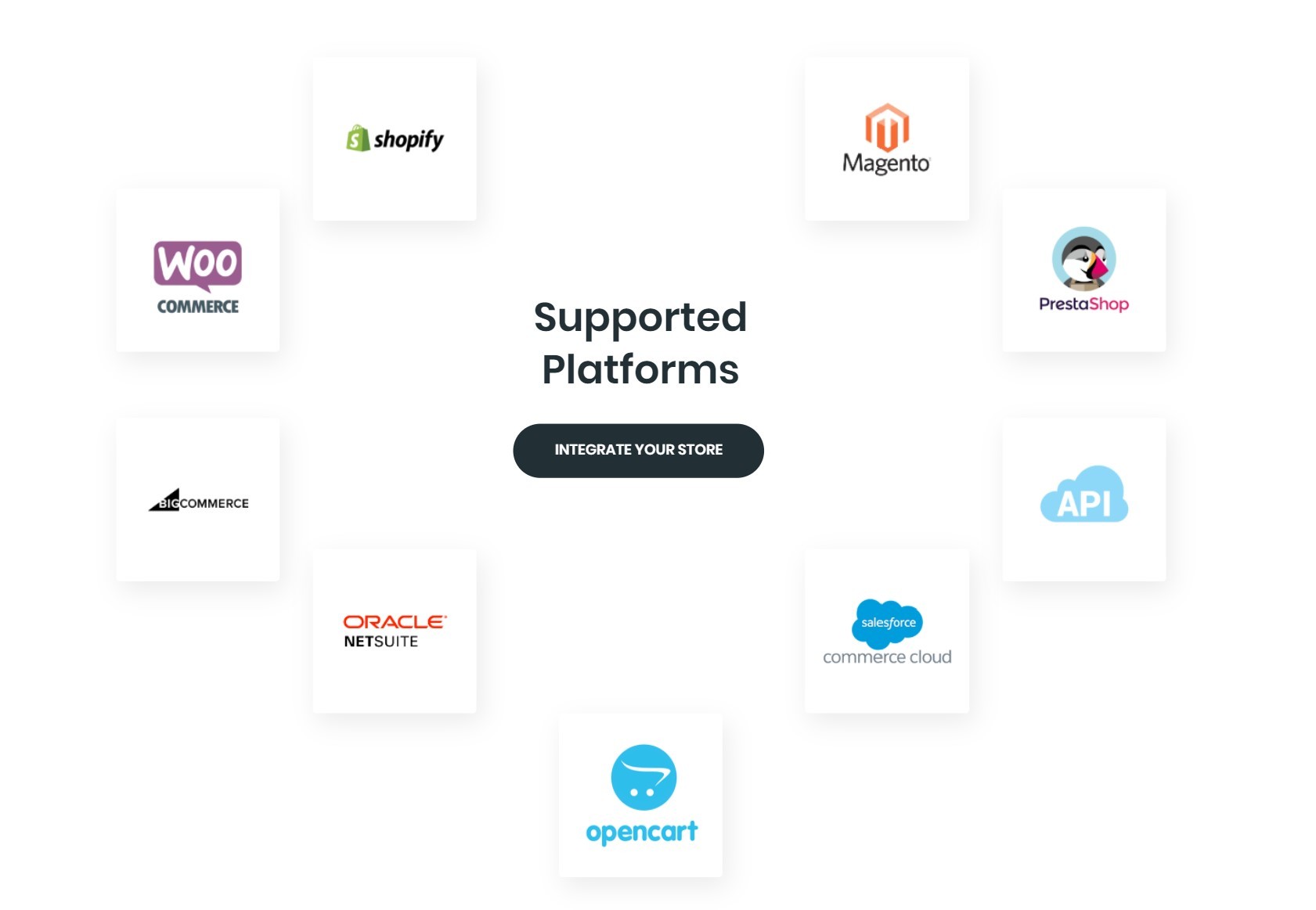
Is PrestaShop better than WooCommerce?
Is selecting an eCommerce platform a daunting task? Are you wondering whether PrestaShop or WooCommerce is the better option for your business? Do you yearn for insight to make an informed decision? These are common queries for entrepreneurs delving into the eCommerce universe. This article attempts to answer just that – which between the two platforms, gives the best value for your business?
According to a study by eCommerce Guide (2020), choosing the wrong eCommerce platform can sabotage your online business, resulting in revenue losses and poor customer experience. Additionally, a similar study by Forbes (2020) affirms that 67% of online businesses fail due to poor eCommerce platform selection. These statistics raise concerns for businesses venturing into the online marketplace. A recent survey from the USA proposes a review of existing eCommerce platforms to aid entrepreneurs in making the best choice. The motivation behind this proposal is to provide a solution to this problem: a detailed comparison of PrestaShop and WooCommerce, two significant eCommerce platforms.
In this article, you will learn about the detailed insights of PrestaShop and WooCommerce. The comprehensive overview will cover pricing, ease of use, customization capabilities, and support services. Additionally, the article will analyze user experiences and reviews to give you firsthand information on how these platforms work in real-world scenarios.
By the end of it, you will be equipped with enough actionable insights to make an informed decision for your business. Whether you are just stepping into the eCommerce universe or are considering changing your existing platform, this deep dive will guide you in making the best choice. Buckle up and get ready for the eCommerce showdown: PrestaShop vs WooCommerce!

Understanding the Definitions: PrestaShop Vs WooCommerce
PrestaShop is an open-source e-commerce system which allows you to start your online store from scratch and customize it according to your needs and choice, without needing much technical knowledge.
WooCommerce on the other hand, is a plugin for WordPress – a renowned open-source content management system. If you want to add an online store to your existing WordPress website, you can use WooCommerce. You need a little knowledge about WordPress for handling your WooCommerce store.
Both are powerful e-commerce solutions, but their correct usage depends on the specific needs and technical skills of the users.
PrestaShop Vs WooCommerce: Breaking the Misconceptions
Features and User Convenience
PrestaShop and WooCommerce both offer numerous features that make them appealing, yet there are notable differences that make PrestaShop come out on top for some businesses. The biggest distinguishing factor is user convenience. For many, the administrative interface of PrestaShop is more straightforward, with a dashboard that is easy to navigate. As opposed to WooCommerce, which requires the addition of multiple plugins to match the functionality of PrestaShop, this e-commerce platform comes pre-packed with many necessary features. This proves beneficial for start-ups and small businesses with limited resources.
- Advanced Stock Management: This feature allows business owners to track inventory in real time, a massive advantage for avoiding stockouts and overstocking, which can lead to customer dissatisfaction and increased holding costs, respectively.
- Setting Up Multiple Stores: PrestaShop allows the setting up of multiple stores from a single back office, a unique offering when compared to WooCommerce. This feature aids businesses aiming for expansion or having diverse product lines.
Customization and Technical Support
While both platforms facilitate a high degree of customization, PrestaShop takes the lead with more than 5000 templates and modules available for tailoring an online store. WooCommerce does offer a good degree of customization, but PrestaShop offers a clear direct advantage, especially for those after a unique, high-end aesthetic. Businesses can create an online store that truly reflects their branding and vision, enhancing customers’ shopping experiences as they browse through the customized online store.
PrestaShop’s technical support is another winning point. Unlike WooCommerce, whose support is dependent largely on the WordPress community, PrestaShop provides dedicated technical support. This can be via contact forms or even, for a cost, one-on-one help from PrestaShop advisors, delivering peace of mind to business owners when technical issues arise.
One possible drawback of PrestaShop is the learning curve associated with its use. Yes, the platform is feature-rich and offers a plethora of customization options, but mastering all these features can take time. This is where WooCommerce, with its user-friendly, intuitive setup, can be appealing, especially to those new to the e-commerce world. Yet, if one is willing to invest the time in learning the functionalities of PrestaShop, the benefit may outweigh the initial challenge.
In sum, considering the combination of robust built-in features, a dazzling array of customization options, and dedicated technical support, it’s clear to see why PrestaShop could be the best pick for your e-commerce business.
Diving Deeper into PrestaShop: Advantages that Outshine WooCommerce
Placing Retailers in Contemplation
Does the concept of setting up a flourishing online store keep you up at night? Indeed, the question isn’t about whether to entertain an eCommerce presence or not, but which platform to utilize. Understanding how a platform can amplify or defuse your business propositions is significant in light of the eCommerce battlefield. Entrepreneurs have compared PrestaShop with WooCommerce, yielding insights into PrestaShop’s unique offerings. Do you know PrestaShop offers a detailed statistics system that enables you to analyze your data and modify your business strategies? The platform also supports an impressive list of payment solutions, making it all the more alluring.
The Underlying Concerns
Navigating through the maze of eCommerce platforms can be a mammoth task. The primary concern arises from understanding the tools and features that differentiate one platform from another. One might argue that WooCommerce offers an exemplary range of features, being an open-source platform. However, its limited support service is questionable. Moreover, WooCommerce essentially operates as a WordPress plugin, necessitating in-depth knowledge of the WordPress ecosystem, thereby increasing its learning curve. PrestaShop, on the other hand, with its standalone eCommerce platform, offers extensive functionality while maintaining an intuitive user interface.
Picturing Success with PrestaShop
When it comes to successful online store examples, PrestaShop stands out. Take retailer Zippo, for example. Known for their globally recognized windproof lighters, Zippo moved their online presence to PrestaShop and observed a measurable improvement in their eCommerce performance. They liked PrestaShop’s customizable templates and storefront, which differentiated them from the competition. The user-friendly back office system facilitated easy management of thousands of SKUs. Another example is fashion brand Eleven Paris, which saw a 30% increase in traffic and 29% increase in sales after implementing SVG images using PrestaShop. These cases underline why PrestaShop has effectively levelled the eCommerce battlefield.
WooCommerce or PrestaShop: Shattering the Myth of the Undisputed Leader
Thought-provoking Contemplation: Is There an Unseen Powerhouse in the eCommerce Industry?
Is there a possibility that the underdog in the eCommerce platforms race trumps the popularity champion? This may seem improbable to consider, especially with WooCommerce gaining so much traction. However, a deeper introspection into PrestaShop’s offerings yields some surprising revelations. Boasting a robust set of features and an impressive level of customization, PrestaShop truly presents a tough challenge to WooCommerce. Its simplified interface, ease of use, and rich catalogue management are perfect for businesses of all shapes, sizes, and industries. Unlike WooCommerce, which relies on WordPress, PrestaShop is a self-sufficient, standalone eCommerce platform. Helping businesses strike the sweet balance between tech-savviness and management capability, it is constantly pushing the boundaries of what a dynamic eCommerce platform should embody.
An Underestimated Hurdle in the eCommerce World
The main obstacle that PrestaShop contends with is undoubtedly the overshadowing dominance and popularity of WooCommerce. The renowned eCommerce platform is widely respected for its user-friendly features, adaptability with WordPress themes, and extensive plugin options. Additionally, WooCommerce’s powerful SEO capabilities and accessibility to a massive user community also undoubtedly tip the scales in its favor. However, PrestaShop challenges this superiority with its distinct advantages. This includes its innate eCommerce focus and boosted performance, resulting from its independent platform status. Also, it boasts over 600 features out of the box, compared to WooCommerce’s reliance on plugins for feature enhancement. PrestaShop’s comprehensive dashboard, offering detailed insights into a business’s progression, outclasses WooCommerce interface. Hence, the underdog, battling against all odds, is not just giving tough competition but poses a worthy alternative to WooCommerce.
Best Practices: PrestaShop Rises to the Challenge
Delving into examples of best practices, PrestaShop’s performance in the eCommerce world is truly laudable. Taking a reputable French fashion brand’s online store as an instance. Being a brand that demanded a high level of customization for its unique products and designs, they turned to PrestaShop. Owing to the platform’s flexible nature that perfectly catered to their needs, PrestaShop made an immediate impact, resulting in increased sales, higher customer satisfaction, and a commendable boost in overall eCommerce performance. Another notable example is a luxury watch retailer that engaged PrestaShop. With a desire for an elegant, professional and comprehensive online store, PrestaShop was up to the task. The platform provided seamless inventory management, facilitated global shipping, and integrated easily with various payment gateways. Hence reinforcing the efficacy and powerful prowess of PrestaShop even in the face of stiff competition from WooCommerce.
Conclusion
Have you thoroughly examined the details and performance of both PrestaShop and WooCommerce? While both platforms offer unparalleled services, they cater to different aspects of e-commerce. Reflecting back on the discussions we had on the features, technical requirements, cost, and ease of use of both platforms, it’s noticeabe that each has its unique strengths. WooCommerce stands out with its user-friendliness and seamless integration with WordPress, while PrestaShop shines with its out-of-the-box features perfect for small to mid-sized businesses.
Doesn’t this post pique your interest about ongoing developments and insights in e-commerce platforms? Then why not take a moment to hit the ‘Follow’ button? By following our blog, you gain access to thoughtfully curated, in-depth, and high-value content. Our contributors regularly analyze the trending topics in e-commerce, providing value-packed content to keep you in the loop.
The world of e-commerce platforms is dynamic and ever-evolving. As we brace to welcome new trends and technologies, we can anticipate new versions, updates, or even potentially game-changing releases from both PrestaShop and WooCommerce. Rest assured that we, at this blog, are dedicated to keeping abreast of these changes. Keep an eye out for our future posts, as we will be looking into these trends as they emerge, always striving to serve you with relevant and up-to-the-minute content.
F.A.Q.
FAQ
1. Is PrestaShop easier to use than WooCommerce?
PrestaShop is considered to be more user-friendly, especially for beginners, due to its straightforward interface. However, WooCommerce also has a manageable learning curve, especially for individuals familiar with WordPress.
2. How does the performance of PrestaShop and WooCommerce compare?
Both PrestaShop and WooCommerce provide robust performance. However, WooCommerce, being a WordPress plugin, may depend on the overall performance of your WordPress website.
3. Which platform offers more customization options, PrestaShop or WooCommerce?
Both PrestaShop and WooCommerce offer extensive customization options. WooCommerce, thanks to its WordPress roots, may offer more in terms of design due to a larger selection of themes and plugins available.
4. Can PrestaShop handle larger product catalogs compared to WooCommerce?
While both platforms can support large product catalogs, PrestaShop is often preferred for larger scale ecommerce operations due to its robustness. WooCommerce can also handle large catalogs but performance may vary depending on your hosting and configuration.
5. Is it easier to integrate third-party applications with PrestaShop or WooCommerce?
Both platforms support third-party integrations. However, WooCommerce has an edge with more plugins available, and is often considered to be more flexible for integrations due to its WordPress backbone.












